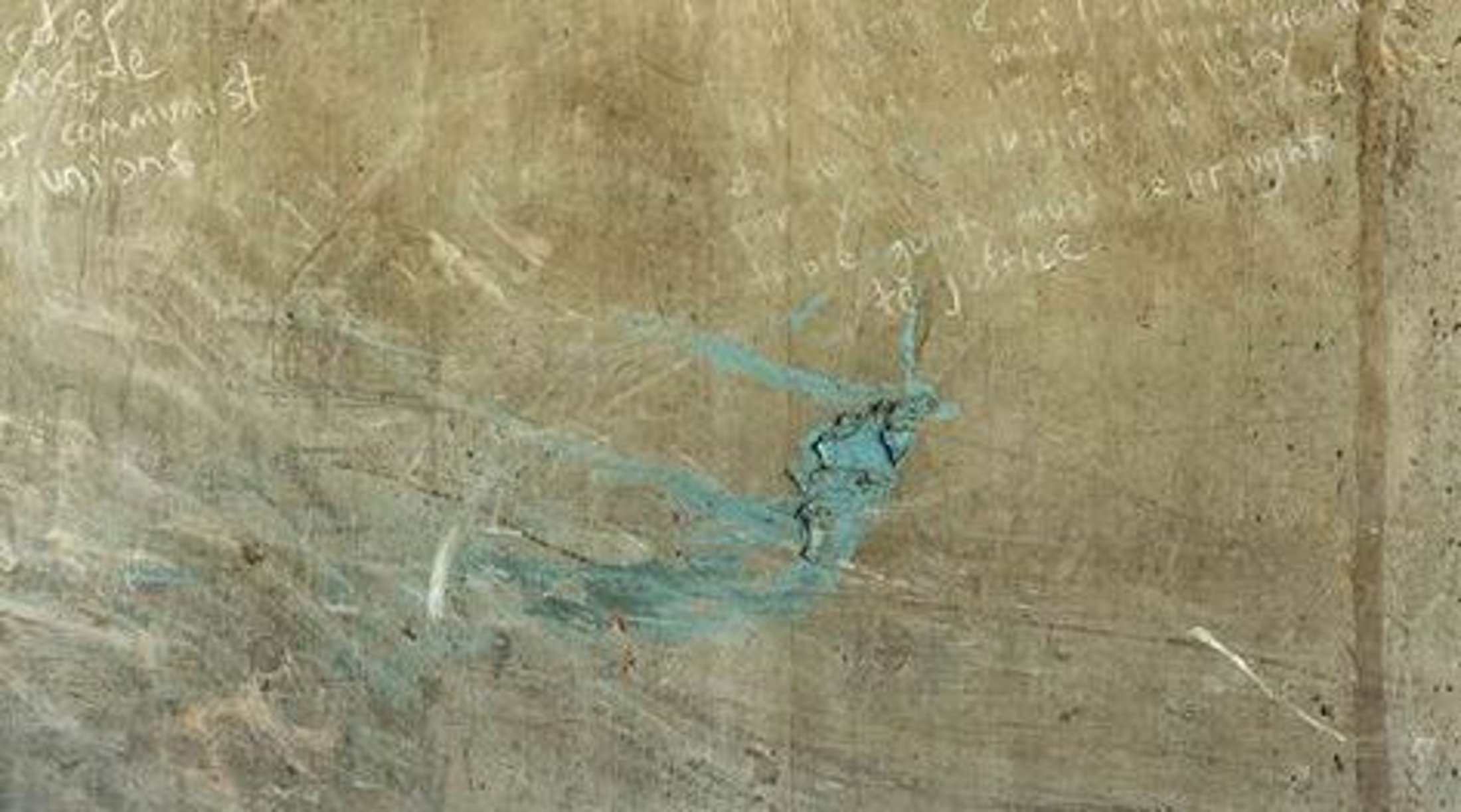"Sometimes he wonders what zone of transit he himself was entering, sure that his own withdrawal was symptomatic not of a dormant schizophrenia, but of a careful preparation for a radically new environment, with its own internal landscape and logic, where old categories of thought would be merely an encumbrance."
— J.G. Ballard, The Drowned World, 1963
Concrete Island, 2010–2011 depicts walls that support a flyover of the A406 (a ring road in the suburbs of North London). The project’s title refers to J.G. Ballard’s novel of the same name in which an architect becomes stranded between intersecting motorways after a car crash: a modern interpretation of Daniel Defoe’s Robinson Crusoe.
The photographs are all shot in the same location, an edge space entered into through a gap in the railings. The site is surrounded on all sides by roads. It exists in a footprint of an overpass, an uninhabited isosceles of land with no specific social designation other than as waste.
Within the photographs there is little evidence of the world beyond the wall: the view is suffocating, controlled, concentrating the viewers’ eye on the effects of human intervention within these landscapes and the colour of the concrete surfaces. Stanzas of text, often political, punctuate the images. Made in a transitory material (chalk) and at a scale that viewers beyond the space only see as an incoherent scrawl rather than coherent message.
Mirroring the protagonist of Ballard’s novel: firstly marooned physically then unable to escape psychologically, I have a sustained engagement with this site. The area surrounding the space is in the process of being cleared. The walls under the flyover are plainly visible from the road. Consequently a whole series of new graffiti has cropped up covering over the marks that I have been photographing for the past year.
This occurrence has forced me to re-adjust my engagement: to go deeper into the site. I have done this in a physical way and am now working in the surrounding storm drains; documenting scratches on the wall made by the overhanging plants, juxtaposing the organic forms with the concrete.
My approach to the subject matter of Concrete Island is akin to archaeology. The process of photographing thus becomes a means to decipher the site. In this context I intend the images to draw the viewer’s attention to marks that are often overlooked in the navigation of the built environment: a reflection on the spaces we occupy both physically and emotionally.
— Peter Ainsworth presented this work at the Format International Photography Festival, Derby, UK, in 2011.

Feature
Concrete Island
Peter Ainsworth presents a series of photographs all shot in the same location, an edge space entered into through a gap in the railings under a ring road in the suburbs of North London.
View Images
Feature
Concrete Island
Peter Ainsworth presents a series of photographs all shot in the same location, an edge space entered into through a gap in the railings under a ring road in the suburbs of North London.
Concrete Island
Peter Ainsworth presents a series of photographs all shot in the same location, an edge space entered into through a gap in the railings under a ring road in the suburbs of North London.


